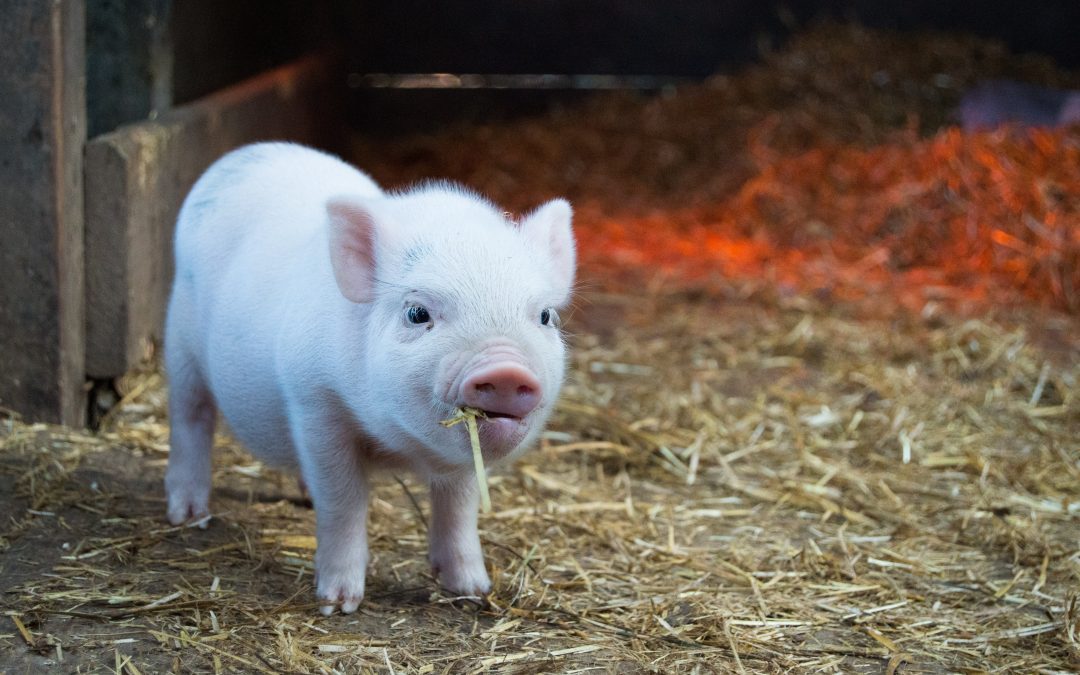Robots have revolutionized the way we interact with technology and have a profound impact across various industries. From manufacturing floors to the vastness of space, these mechanical marvels are changing the face of innovation and efficiency. The world of robotics is diverse and continuously evolving, with each type designed to perform specific tasks that can range from mundane to highly complex. Understanding these various types opens a window into the future of automation and artificial intelligence.
This article delves into the 40 most important types of robots that are shaping our world today. Each type serves a unique purpose, whether it’s enhancing precision in surgery, exploring the depths of the ocean, or bringing new efficiencies to manufacturing processes. We will explore their functionalities, applications, and the cutting-edge technologies that drive them. This journey will not only highlight the technical aspects but also reflect on how these robots are transforming industries and daily life.
TYPES OF ROBOTS LIST
Below we have compiled a list of 40 types of robots that we believe will have the greatest popularity, demand, and will play an increasingly important role in the coming years.
1. Industrial Robots
Industrial robots are the most common type of robots and are used in manufacturing environments to perform repetitive tasks such as welding, painting, assembly, cutting, and packaging. They are designed for 24/7 operation and are capable of handling heavy loads, making them ideal for production lines. Some of the most popular industrial robots are ABB’s IRB 2600, FANUC’s M-2000iA and KUKA’s KR 6.
2. Service Robots
Service robots are designed to interact with people and perform tasks such as cleaning, security, and delivery. They are equipped with sensors and cameras to help them navigate and interact with their environment. Some examples of service robots include Roomba, K5, and Knightscope K5.
3. Medical Robots
Medical robots are designed to assist in medical procedures and surgeries. They can be remotely operated by a surgeon or programmed to perform a specific task such as inserting a stent. They are equipped with high precision instruments and are often used in minimally invasive procedures. Examples of the most popular medical robots include the da Vinci Surgical System, the ProxiPen and the NeuroArm.
4. Military Robots
Military robots are used for various purposes, including reconnaissance, surveillance, and combat. They are often equipped with weapons and are designed to operate in hostile environments. Such robots are ideal for working in conditions that are too dangerous for humans such as bomb disposal. Examples of military robots include the Predator drone, the PackBot and the TALON.
5. Domestic Robots
Domestic robots are designed for use in homes and are often equipped with sensors, cameras and speech recognition technology. They can be used for tasks such as cleaning, security, and entertainment. Some popular examples of domestic robots include Amazon’s Echo, Google’s Home, and iRobot’s Roomba.
6. Agricultural Robots
Agricultural robots are used in farming to perform tasks such as planting, harvesting, and monitoring crops. They are equipped with sensors and cameras to help them navigate the fields and make precise movements. Examples of agricultural robots include the Harvest CROO, the Naio Technologies Oz and the Bosch Smart Agriculture Solution.
7. Space Robots
Space robots are designed to operate in space and perform tasks such as repairing satellites, collecting data, and exploring other planets. They are often equipped with specialized tools and instruments to help them carry out their mission. Examples of space robots include the Mars Rover, the Hubble Space Telescope, and the International Space Station’s Dextre robot.
8. Underwater Robots
Underwater robots, also known as remotely operated vehicles (ROVs), are used to explore and study the ocean. They are equipped with sensors and cameras to help them navigate the underwater environment and collect data. Examples of underwater robots include the Deep Discoverer, the Seabed Constructor and the OceanOne.
9. Construction Robots
Construction robots are used to automate tasks such as bricklaying, concrete pouring, and demolition. This type of robots is characterized by special design which allows it to be able to work in hazardous and challenging environments, making construction sites safer and more efficient. Examples of construction robots include the Hadrian X, the SAM100 and the AutoMate.
10. Search and Rescue Robots
Search and rescue robots are designed to assist in the search and rescue of individuals in hazardous or hard-to-reach environments, such as disaster zones or collapsed buildings. They are equipped with sensors and cameras to help them navigate and search for survivors. Examples of search and rescue robots include the RoboSimian, the K-10 and the I-Snake.
11. Educational Robots
Education robots are designed to help students learn and explore science, technology, engineering, and mathematics (STEM) subjects. They are often equipped with sensors and cameras to help students understand and interact with different concepts. Examples of education robots include the Sphero SPRK+, the Cubelets and the Makeblock mBot.
12. Autonomous Cars
Autonomous cars, also known as self-driving cars, are vehicles equipped with sensors, cameras, and artificial intelligence to enable them to drive without human intervention. They have the potential to revolutionize the way we travel, making transportation safer and more efficient. Examples of autonomous cars include the Waymo, the Tesla Autopilot and the Audi A8.
13. Drones
Drones are unmanned aerial vehicles (UAVs) equipped with sensors, cameras, and artificial intelligence to enable them to fly autonomously or be remotely controlled. They are used for a variety of purposes, including aerial photography, delivery, and surveillance. Examples of drones include the DJI Mavic, the Parrot Anafi and the PowerVision PowerEye.
14. Exoskeletons
Exoskeletons are wearable devices that provide support and enhance the physical capabilities of the wearer. They are used in medical and industrial settings to help individuals with mobility impairments or to increase the efficiency of manual labor tasks. Examples of exoskeletons include the ReWalk, the EksoGT and the Hyundai Vest Exoskeleton.
15. Social Robots
Social robots are designed to interact with humans and provide companionship. This type of robots is equipped with sensors, cameras, and artificial intelligence to enable them to recognize and respond to human emotions. Examples of social robots include the Pepper robot, the Nannybot and the Buddy robot.
16. Articulated Robots
Articulated robots are industrial robots with rotary joints that allow them to make precise movements and manipulate objects. They are used in a variety of industries, including automotive, electronics, and packaging. Examples of articulated robots include the ABB IRB 2600, the FANUC M-1iA and the Kawasaki Robotics DuAro.
17. Collaborative Robots (Cobots)
Collaborative robots, also known as cobots, are designed to work safely alongside humans in shared workspaces. They are equipped with sensors and software that enable them to detect and avoid collisions with humans. Cobots are typically used in manufacturing, assembly, and packaging industries where they assist human workers with tasks that are repetitive or require high precision. They are designed to be easy to program and can be reconfigured to perform different tasks quickly (they are usually easy to use and integrate with existing processes). Examples of collaborative robots include the Universal Robots UR5, the KUKA LBR iiwa and the Yaskawa Motoman HC10.
18. Mobile Robots
Mobile robots are designed to move freely and autonomously in their environment. They are equipped with sensors and cameras to help them navigate and avoid obstacles. Examples of mobile robots include the Kiva, the Segway and the Boston Dynamics SpotMini.
19. Biomimetic Robots
Biomimetic robots are designed to mimic the form and function of biological organisms. Such type of robots is often inspired by animals, plants, and other living systems and are used in a variety of fields, including medicine, environmental monitoring, and space exploration. Examples of biomimetic robots include the RoboBees, the SoFi and the DASH.
20. Assistive Robots
Assistive robots are designed to help individuals with disabilities or impairments to perform tasks that would otherwise be difficult or impossible. They are equipped with sensors and cameras to help them navigate and make precise movements. Examples of assistive robots include the Reachy, the Agilis and the Honda ASIMO.
21. Swarm Robots
Swarm robots are groups of robots that work together to perform tasks. They are designed to be able to coordinate and collaborate with each other, making them well-suited for tasks that require distributed intelligence, such as environmental monitoring or search and rescue operations. Examples of swarm robots include the Kilobots, the RoboBees and the Kilobug.
22. Humanoid Robots
Humanoid robots are designed to resemble human beings in form and function. They are often used in research and development to study human behavior, movement, and cognition. Examples of humanoid type of robots include the Boston Dynamics Atlas, the Honda ASIMO and the Hanson Robotics Sophia.
23. Delivery Robots
Delivery robots are autonomous machines that transport goods using sensors and mapping tech. They’re popular in industries like retail, food service, and healthcare, as they’re efficient, cost-effective, and come in various sizes. They can operate on pedestrian areas, reducing traffic congestion and pollution. Delivery robots are a promising technology that has the potential to revolutionize transportation.
24. Augmented Reality Robots
Augmented reality robots are robots that use augmented reality technology to enhance their capabilities. They are equipped with sensors and cameras to help them navigate and interact with their environment, and are often used in education, entertainment, and research. Examples of augmented reality type of robots include the Anki Vector, the Sphero SPRK+ and the Makeblock mBot.
25. Cleaning Robots
Cleaning robots are designed to assist with tasks such as vacuuming, sweeping, and mopping. They are equipped with sensors and cameras to help them navigate and perform their tasks effectively. Examples of cleaning robots include the iRobot Roomba, the Neato Botvac and the Ecovacs Deebot.
26. Retail Robots
Retail robots can be used in retail stores for tasks such as stocking shelves, guiding customers, and providing information. These robots can improve the shopping experience for customers and reduce labor costs for retailers.
27. Food Service Robots
Food service robots are designed to assist with tasks in the food service industry, such as cooking, food preparation, and delivery. They are equipped with sensors and cameras to help them navigate and perform their tasks effectively. Examples of this type of robots include the Momentum Machines, the Bear Robotics and the Chowbotics Sally.
28. Warehouse Robots
Warehouse robots are designed to assist with tasks in warehousing and distribution, such as material handling, order picking, and packing. They are equipped with sensors and cameras to help them navigate and perform their tasks effectively. Examples of warehouse robots include the Fanuc Robots, the Locus Robotics and the Vecna Robotics.
29. Personalized Healthcare Robots
Personalized healthcare robots can be used to provide personalized and remote healthcare services, including diagnosis, treatment, and rehabilitation. These robots can improve the accessibility and affordability of healthcare.
30. Inspection Robots
Inspection robots are used to inspect and monitor hazardous environments such as nuclear power plants, oil rigs, and other remote and dangerous locations where human access is limited.
31. Energy Generation Robots
Energy generation robots can be used to harness and convert various forms of energy, such as solar or wind power. These robots can help to reduce reliance on fossil fuels and support the transition to renewable energy sources.
32. Nanorobots
Nanorobots are microscopic robots that can perform various tasks at the molecular or cellular level, such as drug delivery or disease detection. These robots can revolutionize the fields of medicine, biotechnology, and materials science by enabling precise and targeted manipulation of matter.
33. Mining Robots
Mining robots can be used for various mining operations, including drilling, excavation, and transportation. These robots can improve safety and productivity in the mining industry.
34. Firefighting Robots
Firefighting robots are used to fight fires in hazardous environments, such as burning buildings or oil rigs. These robots can reduce the risk of injury to firefighters and improve the effectiveness of firefighting operations.
35. Companion Robots
Companion robots are designed to provide companionship and emotional support to people, particularly the elderly and those with disabilities. This type of robots can significantly improve the quality of life for those who may be isolated or lonely.
36. Logistics Robots
Logistics robots are machines that help with tasks related to managing the movement of goods and materials, such as picking up, moving, and packing items. They are made with special sensors and cameras that help them move around and do their job well. Some examples of logistics robots include the Kiva Mobile Robot, the Vecna Robotics and the HaiPick Robot.
37. Rehabilitation Robots
Rehabilitation robots are used to assist in the rehabilitation of people who have suffered from injuries or disabilities. These robots can provide targeted and precise therapy to aid in recovery.
38. Security Robots
Security robots are used to monitor and secure environments such as airports, banks, and government buildings. These robots can improve security and reduce the risk of security breaches.
39. Entertainment Robots
Entertainment robots are designed to entertain and provide entertainment to humans. They are equipped with sensors and cameras to help them interact with their surroundings and respond to human commands. Example
40. 3D Printing Robots
3D printing robots can be used to create objects using various materials, including plastic, metal, and concrete. These robots can improve the speed and accuracy of 3D printing, as well as expand the range of materials that can be printed.
41. Environmental Robots
Environmental robots are used to monitor and collect data on environmental conditions, such as air quality, water quality, and weather patterns. These robots can help us better understand and manage the environment. They can also clean up the environment, e.g. collect and remove plastic waste from the ocean.
42. Adaptive Robots
The ability for machines and robots to learn could give them an even more diverse range of applications. Future robots that can adapt to their surroundings, master new processes, and alter their behavior would be suited to more complex and dynamic tasks.
Other Most Important Types of Robots
- Modular robots
- Telerobots – teleoperated robots which have semi-autonomous behaviour
- Robotic pets – designed to provide companionship and entertainment to humans
- Financial robots – ones helping with financial operations and finance management
- Sports robots – used to improve athlete performance and training
- Fashion robots – used in the fashion industry for tasks such as sewing, cutting, and embroidery
- Gardening robots (lawn moving, tree cutting, hedge trimming etc.)
- Searching robots (gold diamonds, fuel, gas, truffles and other rare or valuable things)
- Nanny robots
Classification of Robots
Robots can be classified in various ways based on different factors such as their physical structure, function, level of autonomy, application and more. Below we have collected some of the most common ways of classifying robots.
Based on physical structure:
- Mobile robots: These robots have the ability to move from one place to another, either on wheels or legs, or by flying or swimming. Examples of mobile robots include drones, self-driving cars, and robots used in search and rescue operations.
- Manipulator robots: These robots have an arm-like structure with joints and a gripper to manipulate objects. They are used in manufacturing and assembly lines, as well as in medical and surgical applications.
- Humanoid robots: These robots have a body structure similar to that of a human, with a head, torso, arms, and legs. They are designed to interact with humans and can be used for tasks such as customer service and entertainment.
- Stationary robots: These robots are fixed in one location and perform tasks in that particular location. Examples of stationary robots include industrial robots used in manufacturing and assembly lines and robots used for security and surveillance.
Based on level of autonomy:
- Teleoperated robots: These robots are controlled by a human operator who provides instructions using a remote control or a computer interface.
- Semi-autonomous robots: These robots can perform some tasks on their own, but still require human intervention for complex tasks or in case of emergencies.
- Fully autonomous robots: These robots can perform tasks independently without human intervention. They use sensors and algorithms to make decisions and complete tasks.
Based on application:
- Industrial robots: These robots are used in manufacturing and assembly lines to perform repetitive tasks such as welding, painting, and packaging.
- Medical robots: These robots are used in healthcare settings for tasks such as surgery, rehabilitation, and patient care.
- Military robots: These robots are used for surveillance, reconnaissance, and bomb disposal operations in military settings.
- Service robots: These robots are used in a variety of settings such as hotels, airports, and shopping malls to provide customer service and assistance.
Based on functionality:
- Collaborative robots: These robots are designed to work safely alongside humans in shared workspaces. They are equipped with sensors and software that enable them to detect and avoid collisions with humans.
- Learning robots: These robots use machine learning algorithms to improve their performance over time. They are able to adapt to new situations and learn from experience.
- Entertainment robots: These robots are designed to provide entertainment and amusement to humans. Examples include robot pets, robotic toys, and humanoid robots used in theme parks.
Based on power source:
- Robots can be classified based on their power source, such as electric, hydraulic, pneumatic, or mechanical.
Based on mobility:
- Robots can be classified based on their mobility, such as wheeled robots, legged robots, flying robots, or swimming robots.
Based on workspace:
- Robots can be classified based on their workspace, such as industrial robots, medical robots, or space robots.
Based on intelligence:
- Robots can be classified based on their intelligence, such as reactive robots, deliberative robots, or hybrid robots.
Based on interaction:
- Robots can be classified based on their interaction with humans, such as teleoperated robots, autonomous robots, or collaborative robots.
Based on task:
- Robots can be classified based on the tasks they perform, such as assembly robots, welding robots, painting robots, or inspection robots.
Based on size:
- Robots can be classified based on their size, such as nano robots, micro robots, or macro robots.
Based on modularity:
- Robots can be classified based on their modularity, such as modular robots, reconfigurable robots, or self-reconfigurable robots.
Based on cognitive capabilities:
- Robots can be classified based on their cognitive capabilities, such as robots with perception, reasoning, planning, learning, and decision-making abilities.
Below examples of 9 advanced robots:
The Future of Robots
From their origins as mere machines designed to perform repetitive tasks, robots have evolved into collaborative entities with cognitive capabilities. Recent technological advances, especially in the fields of artificial intelligence and machine learning, have made robots more efficient, precise, and capable of self-learning. In this discourse, we will explore the future of robots and their potential impact on society.
One of the primary concerns associated with the rise of robots is the fear of job displacement. However, while certain jobs may become obsolete, the advent of robots will also create new career opportunities. By automating more arduous, repetitive manual labor tasks such as transportation and healthcare, robots will enable workers to become more efficient and free up time for self-improvement. Workers will have the opportunity to receive in-house training and upskilling, developing valuable skills applicable to robot programming, maintenance, and other related fields and industries.
The rise of automation and machines will see a significant shift in the way we work. According to the latest reports physical and manual activities will decline by 18% by 2030, while those requiring basic cognitive skills will decline by 28%. Consequently, workers will require technological skills, with a greater emphasis on expertise in STEM. Furthermore, many roles will demand socioemotional skills, particularly in areas where robots cannot replace human interaction, such as caregiving and teaching.
Robots will also become an integral part of our daily lives, automating simple tasks such as cooking and cleaning in our homes. With advances in computer vision and natural language processing, we may see robots that can interact with the world more, such as self-driving cars and digital assistants. Experts predict that robot technology will continue to advance, with improvements in natural language processing solutions that enable them to process and interpret conversations more accurately. Moreover, robots are enjoying better self-navigation capabilities, requiring less input and guidance from humans to get around.
Robots that use AI and machine learning to enhance productivity and performance are crucial to the workplace of the future. Organizations that fail to adopt these new technologies risk falling behind competitively and losing relevance in the coming years. Those that act now have an opportunity to enjoy a significant first-mover advantage.
In addition, the importance of robots to organizations of all kinds will only increase with time, and their value in boosting productivity and performance cannot be overstated. With the ability to process millions of data points and continually improve their artificial intelligence and machine learning, robots are becoming ever more valuable assets to businesses. Companies that invest in these technologies and develop strategies for integrating them into their operations will be best positioned to succeed in the coming years.
Looking ahead, it is clear that robots will continue to play an increasingly important role in society, both in the workplace and in our daily lives. They will transform the way we work, automate mundane tasks, and create new job opportunities. While there are legitimate concerns about job displacement, there is also great potential for robots to improve efficiency, enhance productivity, and drive economic growth.
In conclusion, the future of robots is full of possibilities, and their impact on society will be significant. As technology continues to advance, it is important for businesses, governments, and individuals to embrace the potential of robots and prepare for the changes they will bring. By doing so, we can ensure that we maximize the benefits of this exciting technology and create a brighter future for all.
Read also: 150 The Most Needed Future Business Ideas 2030-2050
DEFINITION OF ROBOTS
A robot is a machine that is capable of carrying out a complex series of actions automatically, especially by being programmed by a computer. Robots are designed to perform tasks that are repetitive, dangerous, or too complex for humans to perform effectively. They typically consist of a combination of mechanical, electrical, and electronic components, and are capable of sensing, processing information, and executing actions based on that information. Some definitions of a robot also emphasize that it is a machine that resembles living beings or a human being capable of moving independently and performing complex tasks. The term “robot” originated from the Czech word “robota” in the 1920s and was popularized by Karel Čapek’s play “R.U.R.” or “Rossum’s Universal Robots”.
HISTORY OF ROBOTS
The concept of robots extends back to ancient Greece, where legends spoke of artificial beings like Pygmalion’s animated statue. Yet, it wasn’t until the 20th century that robots transitioned from myth to practical application, particularly in industry.
George Devol, in the early 1950s, pioneered the development of the first industrial robot, named the Unimate. Implemented in a General Motors factory, this robot was designed to perform hazardous and repetitive tasks, such as handling and transporting heavy materials. This innovation marked the beginning of robots’ widespread industrial use and spurred the development of more advanced models for varied applications.
In subsequent decades, robotics technology evolved remarkably in capability, efficiency, and user-friendliness. The advent of microprocessors and computer technology in the 1970s and 1980s enabled the creation of more sophisticated robots. These advanced machines were capable of executing intricate tasks, including assembling automobiles and other complex products.
The field of robotics has experienced a significant transformation in recent years, driven by advancements in artificial intelligence and machine learning. Today’s robots are equipped to perform tasks previously deemed unachievable, such as understanding and responding to human speech and gestures. Their application has broadened, spanning diverse industries from healthcare to retail, and entertainment, significantly altering our daily lives and work environments.
The rapid evolution of robotics is a synergy of technological breakthroughs and increasing demand for automation. As technological advancements continue, robots are anticipated to reach unprecedented levels of sophistication, opening a plethora of exciting possibilities and applications for the future.
Read also: TOP 20 Space Business Ideas That Will Be Worth Billions
Do you know about any other important types of robots?
Share your knowledge with us in the comments section below!
Recommended Articles

100 Top Selling Canned Food Products List
In this comprehensive guide, we've brought together a definitive list of the 100 top-selling canned food products, showcasing a variety of staples...

Best Business Ideas Near School – TOP 30 Ideas
In this article, we showcase the top business ideas for establishing ventures near schools. Schools are bustling hubs where students' diverse needs...

TOP 100 New London Business Ideas for 2024
In the heart of the United Kingdom, London's business landscape is witnessing a remarkable transformation. The year 2024 has ushered in a wave of...

Is Pig Farming Profitable Business? 2024 Market Analysis
If you want to know if pig farming is profitable business you've come to the right place. In the following article we present detailed information on the profitability of pig farming. In preparing this article, we have thoroughly researched whether pig farming is...

30 Jobs That Will Be Safe in AI & Robot World
In this article, we will explore 30 jobs that will be safe in the AI and robot world. These jobs span a range of industries and sectors, from healthcare and education to finance and engineering. We will examine the skills and knowledge required for these jobs, as well...
Most Read
25 Future Business Trends That Will Shape The World
Discover the pulse of tomorrow's business landscape through an exploration of the 25 pivotal trends poised to revolutionize our world. In an era defined by rapid change and innovation, understanding these emerging forces becomes imperative for entrepreneurs,...

30 Election Season Business Ideas & Opportunities
Election season brings a flurry of activity and opportunities that savvy entrepreneurs can leverage for substantial profits. From the heightened demand for promotional materials to the increased interest in political analysis, the period leading up to elections is...
100 Top Selling Makeup Products List
In the ever-evolving world of beauty, staying updated with the top-selling makeup products is essential for anyone looking to enhance their makeup routine. Our comprehensive list of the 100 top-selling makeup products for 2024 is your ultimate guide to the most...
TOP 100 Luxury Home Decor Brands
In the world of interior design, luxury home decor brands stand as beacons of style, quality, and exclusivity. These top-tier brands are renowned for their craftsmanship, innovative designs, and ability to transform any space into a lavish sanctuary. From handcrafted...
